 W
WA monorail is a railway in which the track consists of a single rail or a beam. The term is also used to describe the beam of the system, or the trains traveling on such a beam or track. The term originates from joining "mono" and "rail" from 1897, possibly from German engineer Eugen Langen, who called an elevated railway system with wagons suspended the Eugen Langen One-railed Suspension Tramway.
 W
WThe Addis's Single Rail Tramway was a patented monorail system invented in 1869 by William Judson Addis.
 W
WThe Aerotrén is a people mover monorail operating at Mexico City International Airport, near Mexico City, in Mexico. The 3-kilometre (1.9 mi) automated people mover (APM) provides a link between Terminal 1 and Terminal 2.
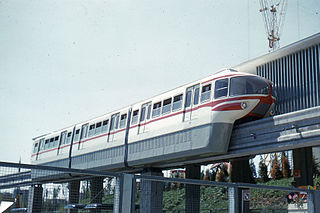 W
WAlweg was a transportation company based in Germany known for pioneering straddle-beam monorails.
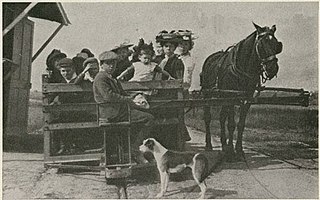 W
WThe Caillet monorail was a monorail invented, patented and developed by Henry Jules Caillet at the end of the 19th century.
 W
WThe Emsland Transrapid Test Facility is a testing site for Transrapid maglev trains in Emsland, Germany. The single track line runs between Dörpen and Lathen. Turning loops are at each end. The track is elevated for almost its entire length to allow continued farming and grazing of the land occupied.
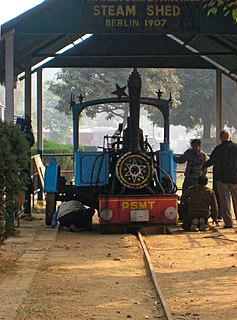 W
WThe Ewing System is a balancing monorail system developed in the late 19th century by British inventor W. J. Ewing. It is not to be confused with the much later system patented by Robert W. Ewing.
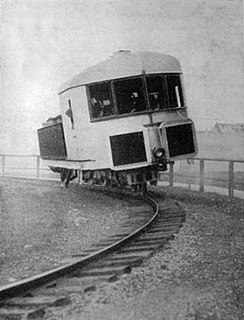 W
WThe gyro monorail, gyroscopic monorail, gyro-stabilized monorail, or gyrocar are terms for a single rail land vehicle that uses the gyroscopic action of a spinning wheel to overcome the inherent instability of balancing on top of a single rail.
 W
WThe Hitachi Monorail System refers to the family of monorails offered by Hitachi Rail.
 W
WThe SCMaglev is a magnetic levitation (maglev) railway system developed by Central Japan Railway Company and the Railway Technical Research Institute.
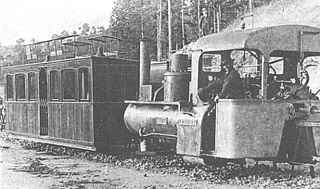 W
WThe Lartigue Monorail system was developed by the French engineer Charles Lartigue (1834–1907). He developed a horse drawn monorail system invented by Henry Robinson Palmer in 1821 further.
 W
WLine 15 (Silver) is one of the six lines that make up the São Paulo Metro and one of the thirteen lines that make up the Metropolitan Rail Transportation Network. It is South America's first mass-transit monorail and is the first system in the world to use the Bombardier Innovia Monorail 300. When completed it will be the largest and highest capacity monorail system in the Americas and second worldwide only to the Chongqing Monorail. The first section, from Vila Prudente to Oratório, opened on 30 August 2014, initially running 10 AM–3 PM on weekends only. As of 26 October 2016, the line is operational from 4:40 AM–12 AM. The line has a free connection to Line 2-Green on Vila Prudente station and future connection to CPTM Line 10-Turquoise on Ipiranga station.
 W
WLine 17 (Gold) is an under construction monorail project for the São Paulo Metro. The line will have 14 stations, beginning at the São Paulo-Morumbi station and ending at the São Judas Station. It will have integration with Line 1 (Blue), Line 4 (Yellow), and Line 5 (Lilac) as well as CPTM Line 9 (Emerald). The line was originally one of the transportation projects supporting the 2014 FIFA World Cup. However delays, and contract disputes have pushed the completion date from the original 2013 full opening date to only the first phase opening in 2021.
 W
WMaglev is a system of train transportation that uses two sets of magnets: one set to repel and push the train up off the track, and another set to move the elevated train ahead, taking advantage of the lack of friction. Along certain "medium-range" routes, maglev can compete favourably with high-speed rail and airplanes.
 W
W"Marge vs. the Monorail" is the twelfth episode in the fourth season of the American animated television series The Simpsons. It originally aired on the Fox network in the United States on January 14, 1993. The plot revolves around Springfield's impulse purchase of a faulty monorail from a conman, and how it subsequently falls to Marge to stop the train from destroying the town.
 W
WThe Mark IV monorail (Mk4) was a design model of straddle-type monorail trains built for the Walt Disney World Monorail System. The design was developed by Disney Imagineer Bob Gurr. Ten trains were built by Martin Marietta in 1969 at the cost of about $7 million USD each and they were used on the monorail system between 1971 and 1989 before they were replaced by the Mark VI monorail, although a few lasted until 1991. Sometime between 1991 and 1994 Monorail Coral and Lime were sold for $3.5 million each, refurbished, and used to begin the Las Vegas Monorail operations. In 2004 Lime and Coral were replaced by fully automated Bombardier MVI 4-car trains.
 W
WThe Mark VI monorail (Mk6) is a monorail train used in the Walt Disney World Monorail System and the Las Vegas Monorail. The Mark VI started replacing the Mark IV monorails at Walt Disney World in 1989, replacing the final Mark IV by 1991. The Mark VI later replaced the two ex-WDW Mark IV monorail sets of the Las Vegas Monorail in 2004. The Las Vegas M-VI versions of the trains differ from the Walt Disney World trains in physical appearance and the fact that they are automated, a trait the Walt Disney World monorails lacked until their automation.
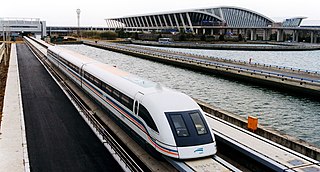 W
WA monorail is a railway system in which the track consists of a single rail, typically elevated and with the trains suspended from it. The term is also used to describe the beam of the system, or the vehicles traveling on such a beam or track. Many monorail systems run on elevated tracks through crowded areas that would otherwise require the construction of expensive underground lines or have the disadvantages of surface lines.
 W
WMonorails in Central Java were used to transport timber from the forests of Central Java located in the mountains to the rivers.
 W
WHenry Robinson Palmer (1795–1844) was a British civil engineer who designed the world's second monorail and the first elevated railway.
 W
WThe Poços de Caldas Monorail was a monorail system that served the city of Poços de Caldas in the state of Minas Gerais, Brazil. Privately owned, the single elevated line connected the bus station to the centre of the city, a total of 6 km (3.7 mi) and 11 stations. Since 2000 the system has been out of service and a section of the track was destroyed in 2003 making it impossible immediately to resume operations. There are plans for its renovation and for services to be reinstated.
 W
WRail transport can be found in every theme park resort property owned or licensed by Disney Parks, Experiences and Products, one of the four business segments of the Walt Disney Company. The origins of Disney theme park rail transport can be traced back to Walt Disney himself and his personal fondness for railroads, who insisted that they be included in the first Disney park, the original Disneyland in California in the United States, which opened on July 17, 1955. The Disney tradition of including transport by rail in its parks has since been extended to other Disney properties with the opening of Walt Disney World in Florida in the United States, Tokyo Disney Resort in Japan, Disneyland Paris in France, Hong Kong Disneyland Resort in China, and Shanghai Disney Resort in China. The Disney theme park chain is the largest on the planet by annual attendance with over 155 million visitors in 2019, and the rail systems located inside its properties play key roles as modes of transportation and as attractions for its visitors.
 W
WScomi Rail, formerly MTrans and Monorail Malaysia, is a Malaysian rail system manufacturer, currently specialising in monorails. The company is one of the world's three leading providers of monorail systems, and one of only four globally recognised integrated monorail system providers, meaning that apart from manufacturing rolling stock, it also provides equipment like communication systems, electro-mechanical systems and services such as system integration and project management.
 W
WSkyRail Bahia is a proposed monorail system serving Salvador, Bahia in Brazil. Upon completion, Salvador will become the second Brazilian city to be served by a monorail line after São Paulo's Line 15.
 W
WskyTran is a Personal Rapid Transit system concept first proposed by inventor Douglas Malewicki in 1990, and under development by Unimodal Inc. A prototype of the skyTran vehicle and a section of track have been constructed. The early magnetic levitation system, Inductrack, now abandoned by skytran, has been tested by General Atomics with a full-scale model. In 2010 UniModal Inc. signed an agreement with NASA to test and develop skyTran. SkyTran has proposed additional projects in France, Germany, India, Indonesia, Malaysia, the United Kingdom, and the United States.
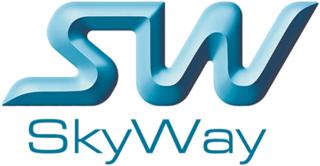 W
WSkyWay Group is a group of companies that market, finance, and construct a system for elevated rail transport. Financial regulators in Germany, Belgium and 15 other countries have banned the sale of financial products from SkyWay or warned the public about a potential scam.
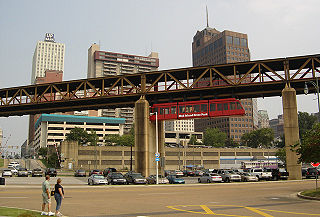 W
WA suspension railway is a form of elevated monorail in which the vehicle is suspended from a fixed track, which is built above streets, waterways, or existing railway track.
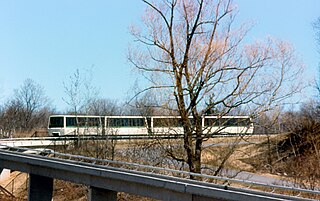 W
WThe Toronto Zoo Domain Ride was an automated guideway transit (AGT) service used to carry visitors between sections, or "domains", of the Toronto Zoo. Though technologically closer to a simple rubber-tired metro, it was almost universally referred to as a monorail.
 W
WTransrapid is a German-developed high-speed monorail train using magnetic levitation. Planning for the Transrapid system started in 1969 with a test facility for the system in Emsland, Germany completed in 1987. In 1991 technical readiness for application was approved by the Deutsche Bundesbahn in cooperation with renowned universities.